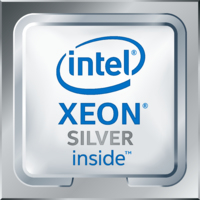
Lenovo 4XG7A07215 processor 2.1 GHz 11 MB L3
Product information
Technical specifications
| Processor codename | Skylake |
| Thermal Design Power (TDP) | 85 W |
| Processor cache type | L3 |
| Processor cache | 11 MB |
| Processor boost frequency | 3 GHz |
| Processor operating modes | 64-bit |
| Processor threads | 16 |
| Processor model | 4110 |
| Processor lithography | 14 nm |
| Component for | Server/workstation |
| Processor socket | LGA 3647 (Socket P) |
| Processor cores | 8 |
| Processor family | Intel® Xeon® |
| Processor base frequency | 2.1 GHz |
| ECC | Yes |
| Memory channels | Hexa-channel |
| Memory clock speeds supported by processor | 2400 MHz |
| Memory types supported by processor | DDR4-SDRAM |
| Maximum internal memory supported by processor | 768 GB |
| Processor package size | 76 x 56.5 mm |
| Tcase | 77 °C |
| On-board graphics adapter | No |
| Intel Turbo Boost Max Technology 3.0 | No |
| Intel® vPro™ Platform Eligibility | Yes |
| Intel TSX-NI | Yes |
| Intel 64 | Yes |
| Intel Virtualization Technology (VT-x) | Yes |
| Conflict-Free processor | Yes |
| Intel® Optane™ Memory Ready | No |
| Intel® Turbo Boost Technology | 2.0 |
| Intel® AES New Instructions (Intel® AES-NI) | Yes |
| Intel Trusted Execution Technology | Yes |
| Intel® Speed Shift Technology | Yes |
| Intel® Hyper Threading Technology (Intel® HT Technology) | Yes |
| Embedded options available | Yes |
| Supported instruction sets | AVX,AVX 2.0,AVX-512,SSE4.2 |
| PCI Express slots version | 3.0 |
| Maximum number of PCI Express lanes | 48 |
Description
Intel® AES New Instructions (Intel® AES-NI) are a set of instructions that enable fast and secure data encryption and decryption. AES-NI are valuable for a wide range of cryptographic applications, for example: applications that perform bulk encryption/decryption, authentication, random number generation, and authenticated encryption.
Intel® Transactional Synchronization Extensions New Instructions (Intel® TSX-NI) are a set of instructions focused on multi-threaded performance scaling. This technology helps make parallel operations more efficient via improved control of locks in software.
Intel® Hyper-Threading Technology (Intel® HT Technology) delivers two processing threads per physical core. Highly threaded applications can get more work done in parallel, completing tasks sooner.
